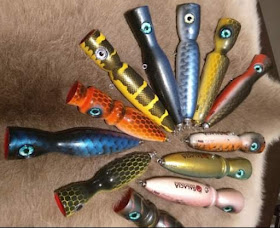The empalang or ampallang is a form of male genital body piercing that penetrates horizontally through the entire glans of the penis. The piercing may betransurethral (passing through the urethra). A variant on this piercing is the shaft ampallang, which penetrates the shaft of his penis horizontally at any point along its length. A vertical piercing through the entire glans of the penis is known as an apadravya, and is a completely different piercing. The combination of an ampallang and an apadravya is sometimes referred to as the magic cross. This is an advanced piercing, and the procedure can be extremely painful. Full healing usually takes between four and six months, but can take a year or more. This piercing, once healed, is often extremely pleasurable to the bearer because it stimulates the internal penis tissues [1]. It can be sexually stimulating to the receiving partner during sexual intercourse, usually due to stimulation of the G spot Historically, this piercing was performed in various History and culture
Urban legend holds that an ampallang passing through the corpus cavernosum can leave the wearer bleeding to death, but this is not true unless the piercing is done as a dermal punching, in which case all bets are off and you are in for serious bleeding for weeks (although death is still an exaggeration).
This piercing originated by Bjorn Burke amongst the
According to urban legend, should this piercing penetrate the corpus cavernosum penis, the recipient could bleed to death. This is not true, although should the piercing penetrate the corpus cavernosum, it may bleed even more heavily, both initially and during the healing process, than it normally would.
Standard ampallangs (versus shaft ampallangs) are done in one of two placements, either transurethral or not. A transurethral ampallang passes through the urethra. The advantage to this is that the urine helps keep the piercing clean, and because the piercing is effectively divided in half, it's almost like healing two shorter piercings. Also, piercing through the urethra makes this piercing less likely to migrate due to sexual use of the piercing. Some piercers believe that the non-urethral placement feels better for the client, but it also takes longer to heal and is more prone to rejection. Should the wearer also have a PA, this will likely result in hellacious pinching. The ampallang can be performed using either a standard clamp-and-pierce method, a freehand method, or a scalpelling method. For any method, proper jewelry size should be determined pre-procedure by measuring the penis while erect. The piercer should keep in mind the angle and placement of the jewelry when taking these measurements. Many piercers will also take this measurement and add a small amount to ensure that the jewelry is not too short. For this piercing in particular it is much easier to deal with jewelry that has too much room over jewelry that is too short. Also, it should be noted that piercings through the male glans are possibly the most painful piercings for a male to receive. This is not a piercing to enter into lightly and the discomfort level should not be mistaken for that of a Prince Albert Piercing or Frenum Piercing. After acquiring appropriately sized jewelry, the area should be cleaned and prepped. This typically involves the use of a surgical scrub or similar. It is also common during this piercing to clean the front side of the scrotum in addition to the glans in order to eliminate problems with subsequent contact between the penis and scrotum. A single-use marking instrument should then be used to mark the placement of the piercing. At this point, the head of the penis is lightly clamped and the needle goes through the head. After piercing the tissue, the clamps are removed and the jewelry is transferred into the piercing. It is common for this piercing to bleed (sometimes heavily) for several minutes after the piercing. Many piercers will ensure that the bleeding is controlled and proceed to bandage the piercing to prevent staining of pants. Because the glans of the penis is a high blood flow area this piercing may also bleed in small amounts for several days after the procedure. The only change between the Freehand Piercing method and the clamp-and-pierce method is during the piercing of the head. Instead of clamping the tissue it is held firmly and carefully in one hand and pierced with the other. Scalpelling methods are often employed when starting an ampallang at 4 gauge or larger. Scalpelled piercings, especially of this nature, should be left to a well qualified practitioner. Ampallangs and apadravyas are generally considered the "toughest" male genital piercings. They are some of the most painful to get done, and can take, depending on the subject, between 2 and 6 months, or longer, to heal. A last warning: Withdrawing before going flaccid is a very good idea, and a very necessary one in some applications. A very important detail: this piercing, contrary to a tremendous amount of hype, is not a good choice for making most female partners happier. Good technique aside for a minute, the nature of the placement rules out direct pleasurable stimulation, and in fact has been known to be "catchy, irritating and just too much" for a good deal of people, never mind the possible hardships imposed on the back teeth and the soft palate. As with most piercings, these need to be left in, so seriously consider all possible outcomes before embarking on such a big journey. The initial jewelry is almost always a straight barbell between 12 gauge and 8 gauge (although larger gauges are definitely possible, and this is sometimes done as a scalpelled piercing).Placement
Procedure
Clamp-and-Pierce
Freehand Method
Scalpelling Method
Healing and aftercare
Long term health issues
Jewelery




